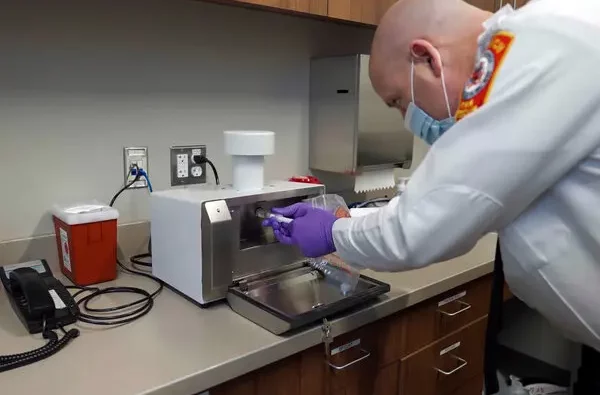
Welcome to a blog post that will change the way you think about mental health treatment. We often associate medication and therapy as the primary methods for managing our emotional well-being, but what if we told you that exercise could be just as effective, if not more? That’s right – physical activity has been proven to have incredible benefits on our mental health. In this article, we’ll explore why exercise should be an integral part of your mental health treatment plan and how it can improve your mood, reduce stress and anxiety, boost self-esteem, and so much more. Get ready to learn all about the power of “exercise as medicine”!
The Relationship between Physical Activity and Mental Health
Physical activity has long been known to be beneficial for mental health, with numerous studies linking regular exercise with improved mood and reduced anxiety. However, there is still a lack of understanding as to why physical activity is so effective in this regard.
One theory suggests that exercise can improve mood because it relieves stress and anxiety. Regular exercise can also improve self-esteem andconfidence as it improves cognitive function and supports positive social interactions. Additionally, exercise has been shown to reduce symptoms of depression by improving serotonin levels in the brain.
In addition to its psychological effects, regular physical activity has also been associated with improved physical health. This is due to the fact that physical activity can improve overall fitness, which in turn leads to lowered risks for chronic diseases such as obesity and cardiovascular disease. Furthermore, regular physical activity has been linked with increased lifespan and better mental health throughout adulthood.
Types of Exercise that are Good for Your Mental Health
There are many types of exercise that can be good for your mental health, and each has its own benefits. Some good examples include:
1) Exercise that helps improve your cardiovascular health. This includes activities such as running, swimming, biking, and walking. cardio-vascular exercise has been shown to improve heart health, blood pressure, and cholesterol levels; it also reduces the risk of developing obesity and type 2 diabetes.
2) Exercise that releases endorphins. Endorphins are substances that help relieve pain and stress, among other things. They’re produced during aerobic exercise (like running or cycling), resistance training (weightlifting), and some types of yoga.
3) Exercise that improves your balance and coordination. These activities includeusing a stationary bike or walker at a low or moderate intensity, dancing, Pilates, quilting, martial arts, skiing/snowboarding without poles/amps/steeps etc., playing tag or using a ball in an open area with friends etc., or using devices like the StairMaster or the Recumbent Bike . Improving balance can help you stay safe when you’re on your feet or when you’re using tools.
4) Exercise that helps improve your mood. Examples of exercises that have been shown to improve mood include brisk walking at an easy pace for 30 minutes every day, regular strength training for 30 minutes three times per week ,and Tai Chi .
How to Implement Exercise into Your Mental Health Treatment Plan
Physical activity is one of the best medicines we have for our mental health. The benefits of exercise are clear: it can improve mood, cognitive function, and physical health. It has also been shown to be an effective treatment for anxiety, depression, and other mental health issues.
When considering how to implement exercise into your mental health treatment plan, keep these three points in mind:
1. Start with small steps. When starting out, don’t overexert yourself or push yourself too hard. Make gradual progress over a period of weeks or months rather than trying to do too much all at once.
2. Incorporate regular physical activity into your daily routine. Even if you only manage to get 30 minutes of exercise each day, that’s better than nothing! Aim to put in more time as you see fit and don’t be afraid to increase the intensity or duration of your workouts as your body becomes used to them.
3. Be patient – it takes time for the benefits of exercise to kick in. Don’t be discouraged if you find it difficult to stick with a regular exercise routine – patience is key! Slowly but surely, over time, you will start seeing positive changes in your mental health and mood.
Advantages of Exercise for Mental Health Treatment
Physical activity has a myriad of benefits for mental health, including reducing stress and anxiety, improving mood, and boosting self-esteem. Exercise can also improve cognitive function and reduce symptoms of depression.
When it comes to mental health treatment, one of the most important things you can do is find an activity that you enjoy. If your exercise routine feels like a chore or doesn’t provide any tangible benefits, it’s likely not going to be as effective as it could be. In addition to finding something you enjoy, make sure you stick with it. The more often you stick to your exercise routine, the better its chances of becoming a habit.
One of the biggest benefits of exercise for mental health treatment is its ability to reduce stress and anxiety. Studies have shown that people who are physically active tend to have lower levels of stress hormones in their blood than those who are inactive. This is likely due to the fact that exercise releases feel-good brain chemicals like serotonin and dopamine which help reduce feelings of anxiety and stress.
Physical activity can also improve mood. One study found that women who exercised had improved moods even two months after completing the study! Researchers believe this may be due to the fact that physical activity increases levels of endorphins, which are hormones that produce euphoria.
Exercise can also boost self-esteem by improving body image issues and overall confidence. People with low self-esteem often miss out on important life opportunities because they don
Conclusion
As clinicians, we are often asked about the benefits of exercise for mental health. The answer is simple: physical activity should be part of every mental health treatment plan! Exercise has been shown to improve mood and reduce anxiety, depression, stress, and fatigue. It can also help boost self-esteem and lead to better sleep habits. In other words, there are a wealth of benefits to be had by incorporating regular exercise into your mental health treatment plan!










